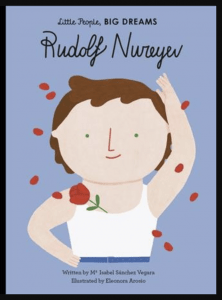Wade, Jess. Nano: The Spectacular Science of the Very (Very) Small. Somerville, Massachusetts: Candlewick Press, 2021.
What a spectacular science book for young readers! Skillfully designed – with fonts of different styles and sizes – and cheerfully illustrated, this picture book about the astonishing world of nanotechnology is highly recommended for readers 6 to 10 years old.
They will learn that pencils contain graphite – layers of carbon atoms on top of each other – that leaves marks on paper because the layers so easily slide over each other and smudge.
A single layer of graphite is graphene, the strongest material now known; it is used to make airplanes lighter in weight and windows clean themselves when touched by sunlight.
More books to expand general knowledge
Older readers may also enjoy this picture book. Too often, it seems, students in grades 6 to 8 are strongly encouraged to read but not shown how easy it is to have fun with books. Three-dimensional reading – the kind that requires paper – does not have to involve serious, multi-chaptered books or humorous graphic novels. It can include picture books that expand general knowledge. A few minutes of reading and you come away with more facts to improve understanding of – and pique interest in – our incredible world.
More ideas for encouraging fun while reading
Generally, I recommend borrowing books from a library. How can we possibly buy every book we want to read? But this is a picture book you might like to purchase and keep. For a long time. The very first book I owned – the first book that was specifically mine – was Our Earth: What It Is, part of the Whitman Learn About series. I was six years old and so fascinated by all the incredible information that my parents ordered the whole series for me. Every month, a new title would arrive in the mail. Bliss! I still have almost the whole set, including that first book with these sentences: “One day we will land on the moon and look back at the Earth. What a wonderful sight we will see!” Decades in the future, you will still appreciate Nano but what will you notice about the progress of technology? What will make you smile?
What books do you own that you have had for a long time? What books do you still treasure? Let me know!

















